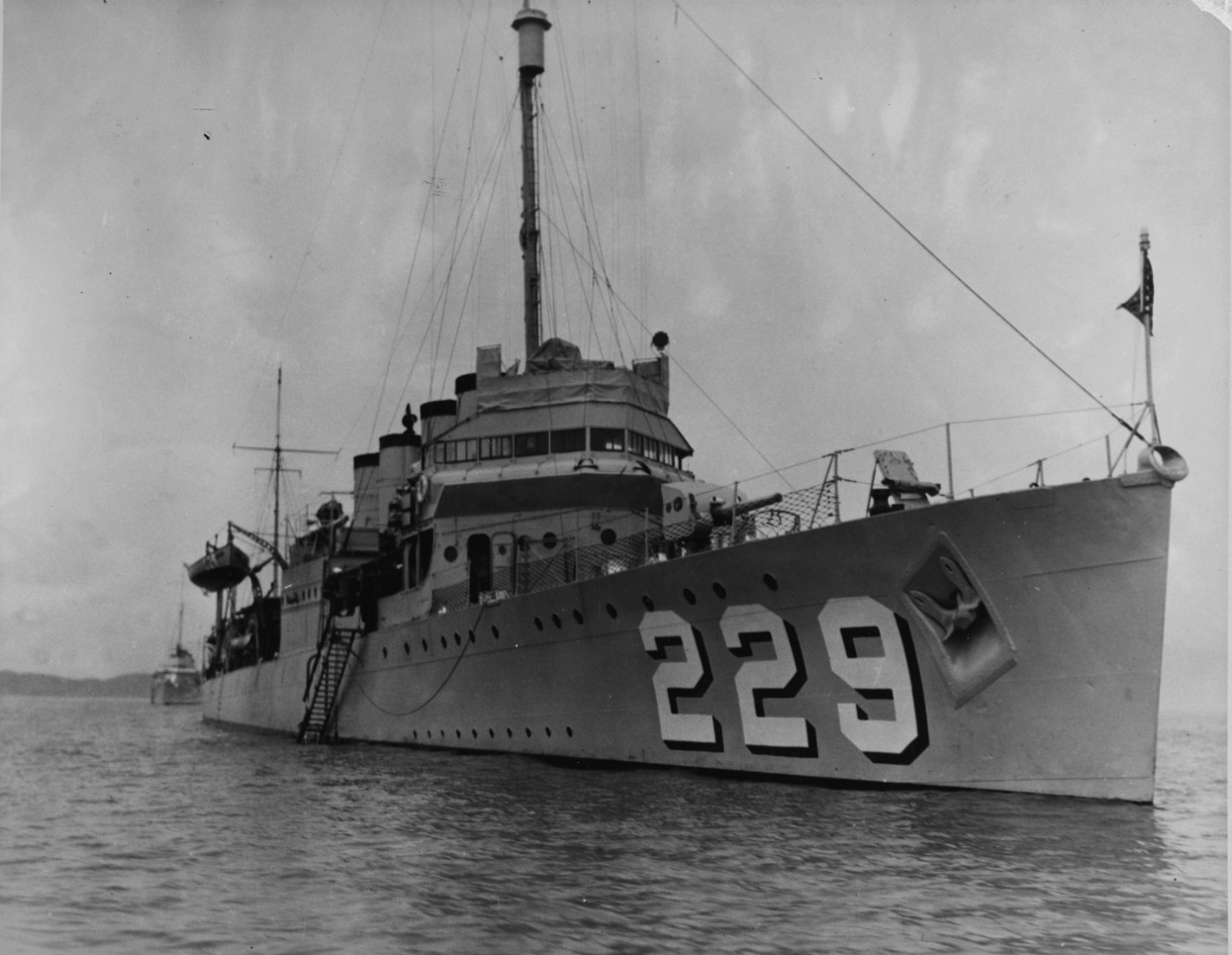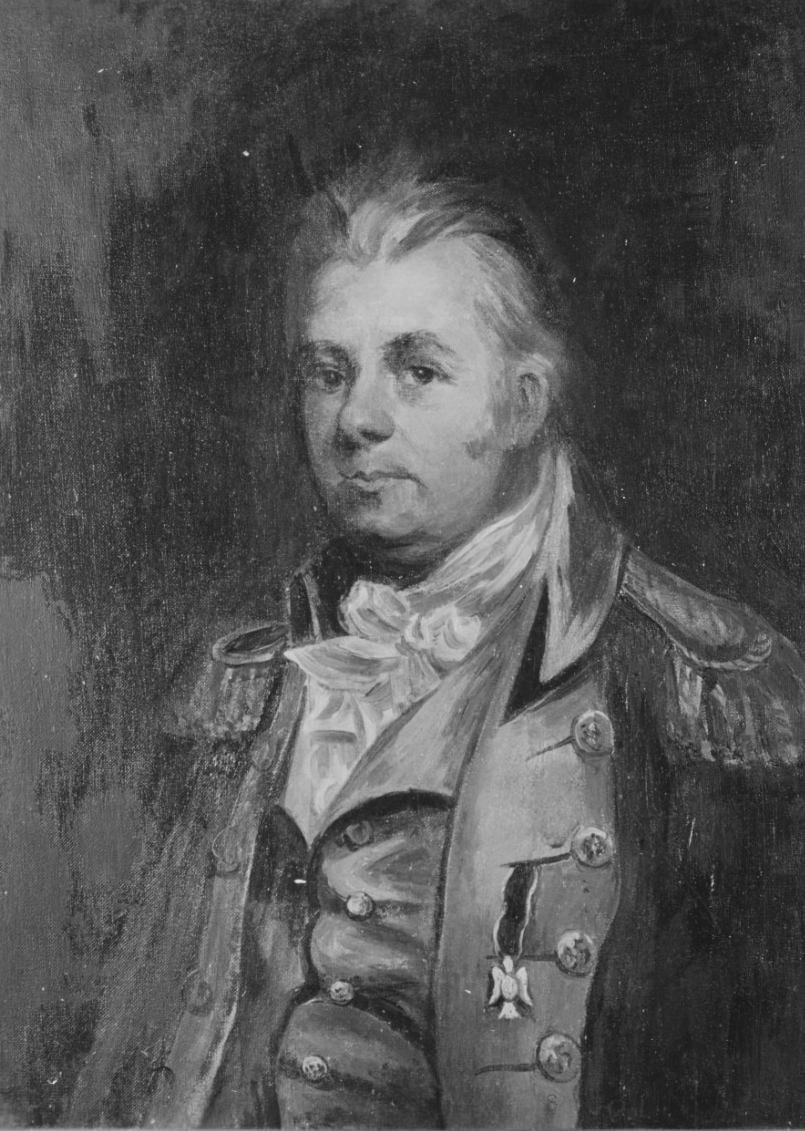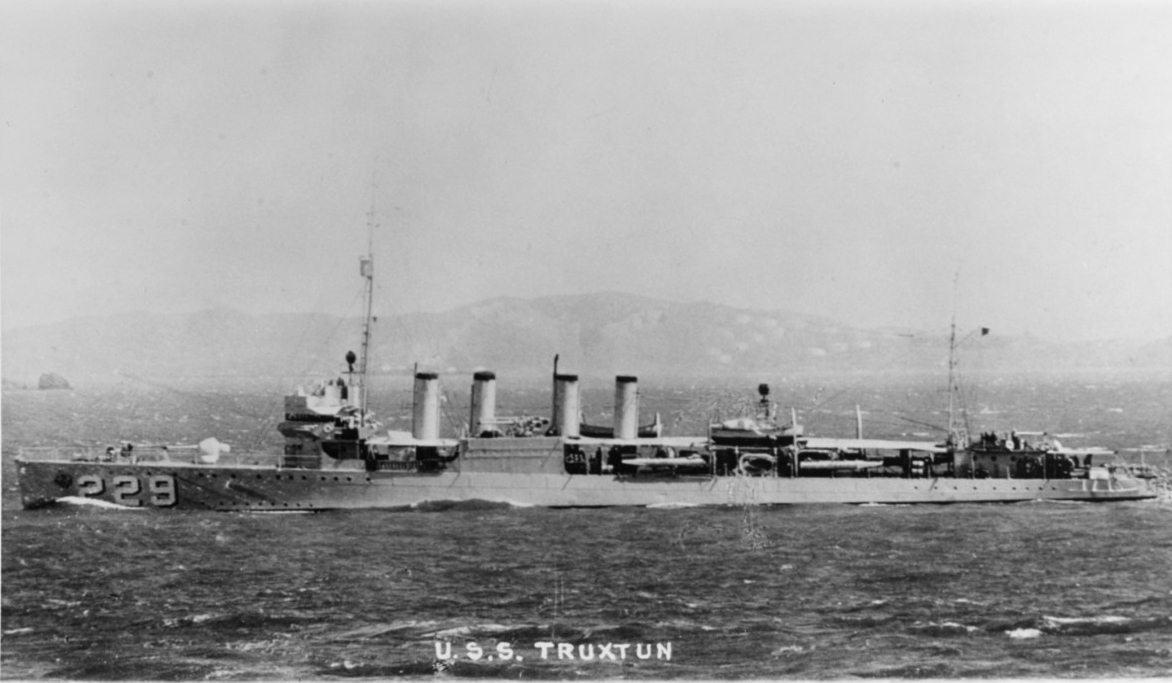Truxtun III (DD-229)
(DD-229: displacement 1,215 tons; length 314'4½"; beam 30'11½" (waterline); draft 9'9¾"; speed 35.18 knots (trial); complement 122; armament 4 4-inch guns, 1 3-inch gun, 12 21-inch torpedo tubes; class Clemson)
Thomas Truxtun was born on 17 February 1755 near Hempstead, Long Island, New York. When his father died in 1765, young Truxtun came under the guardianship of John Troup of Jamaica, Long Island. Two years later, at the age of 12, he embarked upon a seafaring career, sailing with Captains Joseph Holmes and James Chambers in the London trade. At 16, he was pressed into service in the Royal Navy on board HMS Prudent. Truxtun's British commanding officer observed the lad's natural abilities and offered him aid in securing a midshipman's warrant. However, Truxtum declined, obtained his release through the good offices of influential friends, and returned to mercantile service. By the age of 20, he had risen to command of Andrew Caldwell in which he brought large quantities of gunpowder into Philadelphia in 1775. Later that year, his ship was seized by HMS Argo off St. Kitts in the West Indies, an act that caused some natural resentment in the young sea captain.
By the time Truxtun made his way back to Philadelphia, the colonies had reached the point of open rupture with the mother country. He signed on as a lieutenant in Congress, the first privateer to be fitted out for service against Great Britain. During the remainder of 1776, Truxtun participated in the capture of several prizes off the coast of Cuba. In 1777, he fitted out Continental Navy sloop Independence and sailed her to the Azores where he took three prizes. Upon his return, Truxtun fitted out Mars and made a highly successful cruise in the English Channel. Successively, he commanded Independence once more and then, in turn, Commerce and St. James.
In addition to privateering, Truxtun's ships also carried cargoes of military stores to the colonies. On one voyage in St. James, he landed a valuable cargo of gunpowder and military stores at Philadelphia. At a dinner to celebrate the feat, George Washington declared that Truxton's services had been worth those of a regiment. On another occasion, St. James, still under his command, carried Thomas Barclay, the American consul, to France.
Following the Revolution, Truxtun resumed his career in mercantile service and commanded Canton, the first Philadelphia ship to enter the China trade. When the United States Navy was organized, he was selected as one of its first six captains on 4 June 1798. He was assigned command of one of the new frigates then under construction. His ship, Constellation, was completed late in June; and he put to sea immediately to prosecute the undeclared naval war with revolutionary France.
The frigate, accompanied by a squadron of smaller ships, operated in the West Indies between St. Christopher and Puerto Rico. On 9 February 1799, Truxtun scored the first of his two most famous victories. After an hour's fight, Constellation battered Insurgente into submission, killing 29 and wounding 44 of the French frigate's crew. Truxtun brought Insurgente into St. Christopher where she was refitted and commissioned in the United States Navy.
Almost a year later, on 1 February 1800, he sighted the 50-gun French frigate La Vengeance, chased her all day, and finally overhauled her that evening. For the next five hours, Truxtun used superior American gunnery and the prevailing heavy seas to his advantage and, by 0100, completely overcame La Vengeance's initial broadside superiority. During the action, the French warship had struck her colors several times, but darkness had prevented Truxtun from seeing the signal. Accordingly, the engagement continued until every gun on board the Frenchman went silent. The French frigate then sheered off to flee, and Constellation's battle-damaged rigging made it impossible for the American frigate to pursue her escaping victim. After refitting Constellation at Jamaica, Truxtun returned with her to Norfolk late in March.
After commanding frigate President in the West Indies from mid-1800 to May 1801, Truxtun was appointed to command the squadron then fitting out for the Tripolitan expedition. Through a misunderstanding engendered by his request to have a captain appointed to command his flagship Chesapeake, Truxtun's unintended resignation from the Navy was accepted in Washington.
Commodore Truxtun retired first to Perth Amboy, N.J., and thence to Philadelphia, where he was active in local politics for the rest of his life. In 1809, he led the agitation in Philadelphia against the Embargo. The following year, he was unsuccessful in his bid for a seat in Congress under the Federalist banner. From 1816 to 1819, Truxtun served as the sheriff of Philadelphia. Commodore Truxtun died at Philadelphia on 5 May 1822 and was interred there at Christ Church.
III
The third Truxtun (DD-229) was laid down on 3 December 1919 at Philadelphia, Pa., by William Cramp & Sons; launched on 28 September 1920; sponsored by Miss Isabelle Truxtun Brumby; and commissioned at the Philadelphia Navy Yard on 16 February 1921, Lt. Comdr. Melville S. Brown in command.
Upon commissioning, Truxtun completed shakedown and began duty along the east coast with the Atlantic Fleet as a unit of Division 39, Destroyer Squadron 3. She operated with that unit along the Atlantic seaboard until the fall when she was reassigned to Division 43, Squadron 15. During the winter of 1921 and 1922, the destroyer joined the fleet in maneuvers and exercises near Guantanamo Bay, Cuba.
In March 1922, Division 43 returned north to Newport, R.I., to prepare for service in the Asiatic Fleet. On 22 June 1922, Truxtun departed Newport and proceeded, via the Mediterranean, the Suez Canal, and the Indian Ocean, to the Far East which she reached in mid-August. By early September, she and several sister destroyers of Division 43 joined the main elements of the Asiatic Fleet off Chefoo on the northern coast of China. Late in October, the fleet headed south to its winter base at Manila in the Philippines, from whence it conducted exercises until the following spring.
Truxtun served with the Asiatic Fleet for the next 10 years. During that decade, she alternated summer cruises in Chinese waters with winter maneuvers in the Philippines. This routine was punctuated by special unusual assignments. For instance, in June 1924, she and the other five destroyers of Division 43 helped to form a chain of picket ships across the Yellow Sea for the Army Air Corps's global flight mission. More often, however, internecine warfare in China brought Truxtun to the coast of that troubled nation to protect American lives and property. She spent a total of eight out of the 13 months between September 1926 and October 1927 patrolling the Yangtze River while a myriad of factions in China clawed at one anotherand anyone else who happened to cross their paths. The destroyer returned to the Yangtze Patrol twice more, from 1 March to 14 April 1930 and from January through March 1932 when internal political convulsions in China threatened foreign lives and property.
On 18 April 1932, Truxtun departed Manila and the Asiatic Fleet to join the destroyers attached to the Battle Force. After stops at Guam, Midway, and Hawaii, she reached Mare Island Navy Yard on 13 May. For the next seven years, she cruised the Pacific, as far north as Alaska and as far south as the Panama Canal, participating in maneuvers with her big sisters of the Battle Force. Only once, in 1934, did she leave the Pacific. On 9 April, she cleared San Diego and transited the Panama Canal. After calling at Port-au-Prince, Haiti, Truxtun steamed north to New York City, arriving on 31 May. Following that visit, she cruised the eastern seaboard. On 15 September, the destroyer stood out of Hampton Roads, retransited the canal, and returned to San Diego on 9 November to resume operations with the Battle Force.
On 27 April 1939, Truxtun steamed out of San Diego and headed for the canal once more. She reached Norfolk on 15 May and joined Destroyer Division 27, Atlantic Squadron. The destroyer cruised the east coast of the United States while war clouds gathered in Europe. Soon after the outbreak of war in September, Truxtun began enforcing the provisions of President Franklin Roosevelt's proclamation of American neutrality by patrols and escort duty off the Atlantic coast, in the Gulf of Mexico, and in the Caribbean. In late May and early June 1940, the warship made a voyage to Casablanca in French North Africa and then resumed neutrality patrols off Florida and in the Caribbean.
Following repairs at Norfolk in December 1940 and January 1941, Truxtun cleared Hampton Roads on 6 February. The next day, she reached Newport, R.I., where she joined Destroyer Division 63, Squadron 31. Between late February and mid-March, she made two voyages to Halifax, Nova Scotia, returning to the United States at the Washington Navy Yard on both occasions. On 15 March, the destroyer returned to Newport and resumed patrols and exercises. For the remainder of her career, Truxtun patrolled the North Atlantic sea lanes and escorted convoys from New England and Canadian ports, via Argentia, Newfoundland, to Reykjavik, Iceland.
On Christmas Day 1941, Truxtun departed Boston in the screen of Convoy HX-168. She arrived at Reykjavik on 13 January 1942 and, six days later, headed back to Argentia with Convoy ON-57. At 0415 on 18 February while acting as escort to Pollux (AKS-2) in Placentia Bay, Newfoundland, Truxtun ran aground on Ferryland Point. She broke up almost immediately after grounding and, in spite of the heroic efforts of the local populace, lost 110 members of her crew to the elements. Her name was struck from the Navy list on 25 March 1942.
Minor corrections, 7 August 2007





